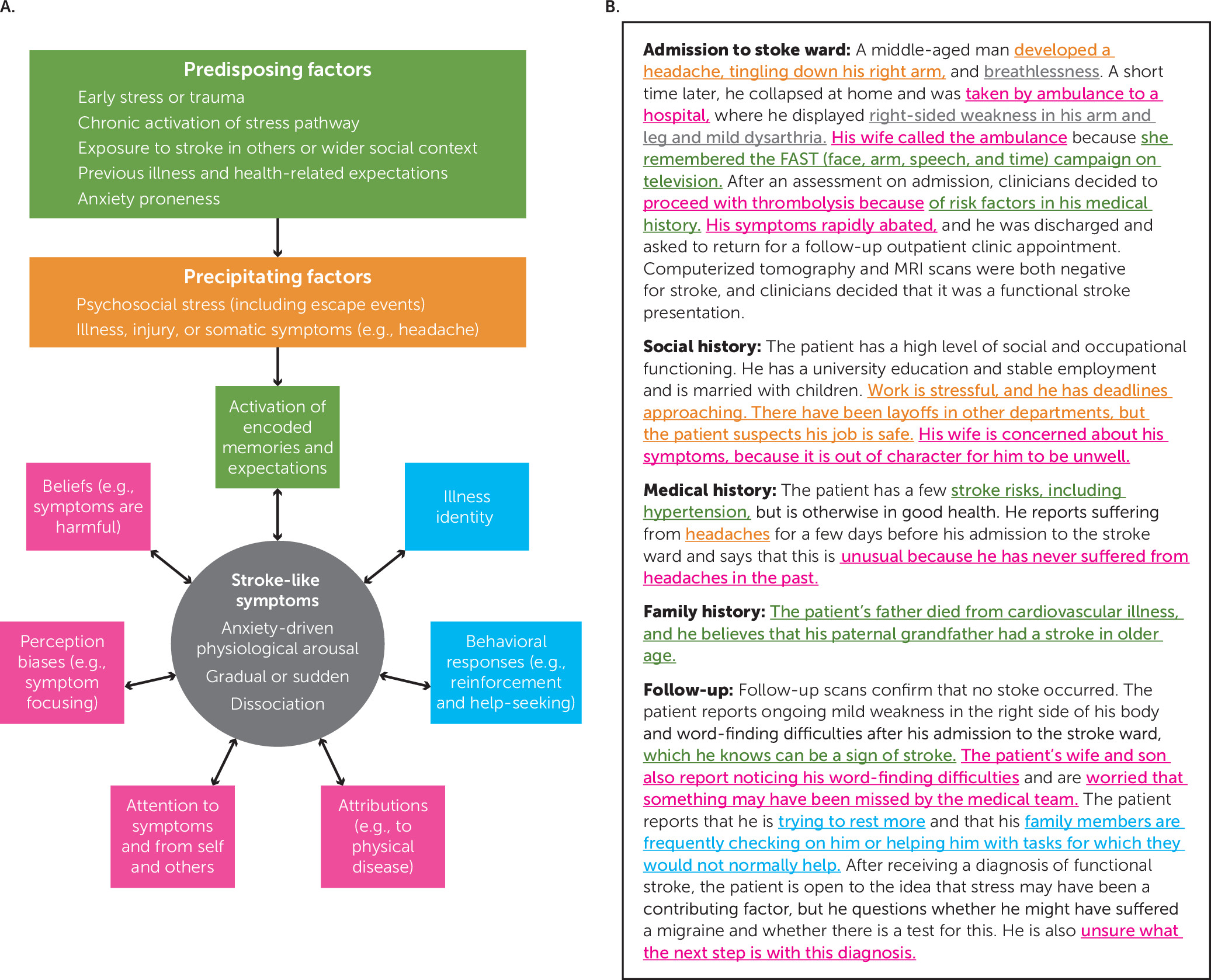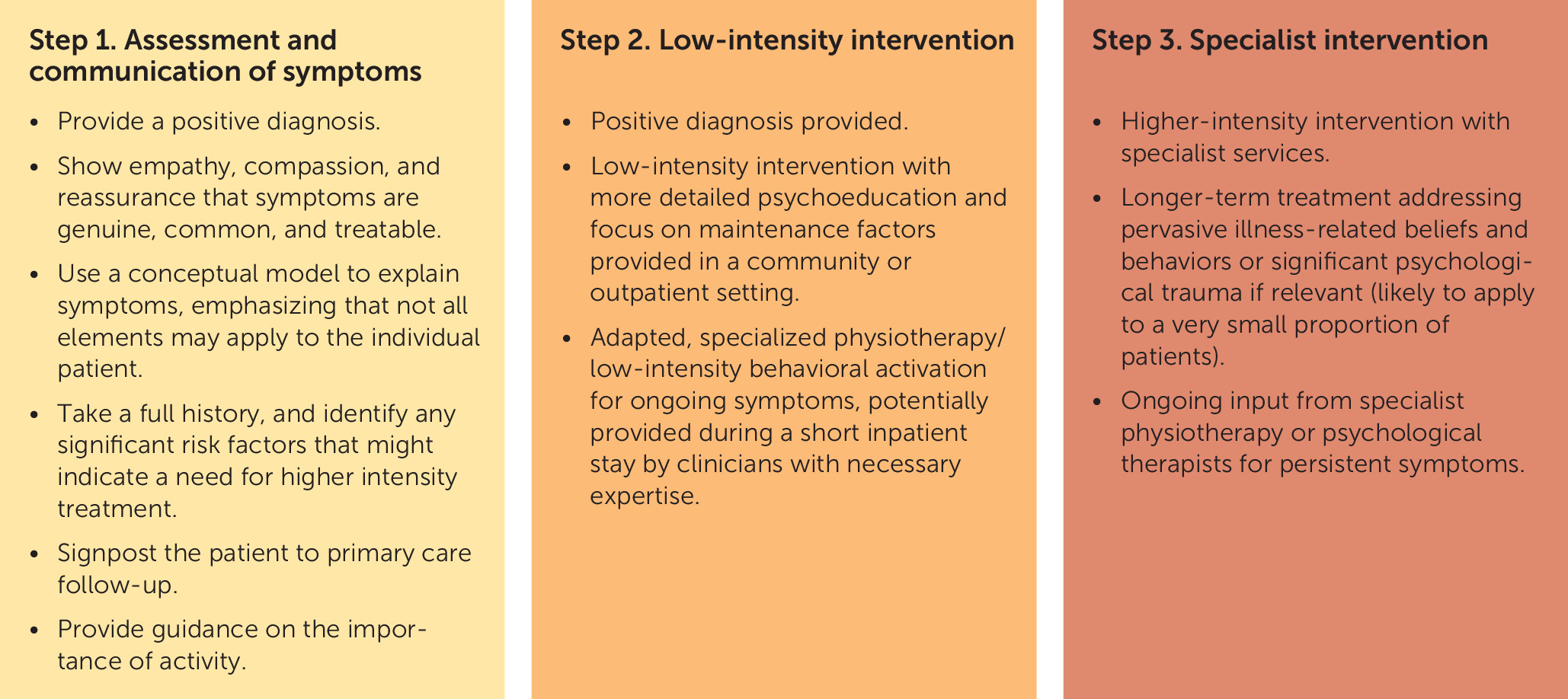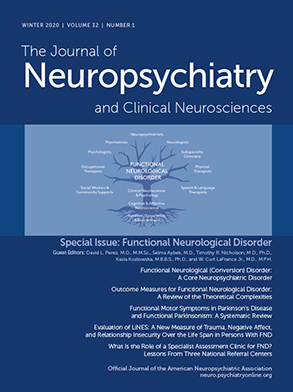Functional Stroke Symptoms: A Narrative Review and Conceptual Model
Abstract
Identification of Functional Stroke Symptoms
Heterogeneity
Rationale
Predisposing Factors
Life Events and Trauma
Illness-Relevant Experiences and Social Environment
Chronic Activation of Stress Pathways
Other Potential Predisposing Factors

Precipitating Factors
Acute Stressors
Physiological Arousal
Dissociative Processes
Perpetuating Factors
Cognitive Biases
Perception.
Attributions and beliefs.
Attention and expectation.
Emotion Processing
Stress Response
Social Context and Response to Symptoms
Illness Behaviors
Summary of the Model for Understanding Functional Stroke
Implications
Stepped-Care Pathway

Assessment of and Communication About Symptoms
Low-Intensity Intervention
Specialist Intervention
Considerations Throughout Intervention
Patient involvement.
Overmedicalization.
Conclusions
References
Information & Authors
Information
Published In
History
Keywords
Authors
Competing Interests
Funding Information
Metrics & Citations
Metrics
Citations
Export Citations
If you have the appropriate software installed, you can download article citation data to the citation manager of your choice. Simply select your manager software from the list below and click Download.
For more information or tips please see 'Downloading to a citation manager' in the Help menu.
View Options
View options
PDF/EPUB
View PDF/EPUBLogin options
Already a subscriber? Access your subscription through your login credentials or your institution for full access to this article.
Personal login Institutional Login Open Athens loginNot a subscriber?
PsychiatryOnline subscription options offer access to the DSM-5-TR® library, books, journals, CME, and patient resources. This all-in-one virtual library provides psychiatrists and mental health professionals with key resources for diagnosis, treatment, research, and professional development.
Need more help? PsychiatryOnline Customer Service may be reached by emailing [email protected] or by calling 800-368-5777 (in the U.S.) or 703-907-7322 (outside the U.S.).

